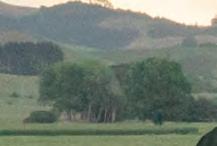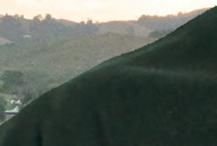
















AUCKLAND FEDERATED Farmers want a national conference debate on whether New Zealand should withdraw from the Paris Agreement on Climate Change.
At the province’s annual conference earlier this month, committee member Deborah Alexander moved a remit to this effect, seconded by immediate past president, Wendy Clark. The remit was passed and will be tabled at Feds’ annual conference in Christchurch next month.
Alexander said withdrawing from the agreement would solve farmers’ present problems with forests being planted on grazing land to gain carbon credits.
“We’re not targeting the source,” she said.
“We should be getting out of the Paris Agreement. It would cause people to flock to become members of the federation.”
She also questioned whether New Zealand’s commitments under the agreement, which came into effect in 2020, were legally enforceable.
Former Auckland dairy chair, John Sexton, said he believed the federation had got sidetracked on the issue.
“We’ve forgotten about the basics,” he said.
“Agricultural emissions are supposed to be causing warming but that’s nonsense.”
He claimed that ruminant methane emissions made up only one part in four million of the gases causing global warming.
“We are wasting billions of dollars around the world.”
Both Alexander and Sexton are founder members of the Methane Science Accord between Groundswell, 50 Shades of Green, Rural Advocacy Network and Facts about Ruminant Methane (FARM) which wants a zero tax on ruminant methane.
Meat and Wool national chair, Toby Williams,

who attended the conference, said the debate was a healthy one to have at the federation’s national conference in a few weeks’ time and he would be comfortable with the policy the federation’s national board put forward.
“We have tried to ask Government and Treasury what the cost would be of withdrawing but they wouldn’t engage,” he said.
Pressed on what his personal view was he said he didn’t know enough about the consequences of withdrawing – “but if we did, I wouldn’t be boohooing”.
Auckland Meat and Wool chair, Peter Anich, said his view was that what New Zealand did wouldn’t make any difference globally.
“The world’s biggest populations and industrial polluters are not signed up to it,” he said.
“Having to pump billions into the European Union for them to decide what third world
countries they want to assist in climate change mitigation is wrong, wrong, wrong.”
Climate change was being caused by population growth, not farming, but if more New Zealand farmland went into forestry, earning carbon credits which were often going to overseas countries, this country would not have the critical mass to keep exporting agricultural products.
“We’re on a hiding to nothing.”
Former Auckland policy manager, Richard Gardner, sounded a note of caution, saying it would be a mistake for the federation to take too strong a position on the Paris Agreement.
“It certainly needs to be looked at,” he said.
“No one is meeting their targets, and it looks as if it’s going to fall over anyway. But if we take an extreme position, we could be targeted. We don’t want to force the Government to do something that’s not in New Zealand’s best interests.”

PETER BURKE peterb@ruralnews.co.nz
LIMPING TOWARDS the end of the season is how Richard Walker describes the situation he’s facing due to prolonged drought in coastal areas of Taranaki.
The farm is just a few kilometres from the coast and sea is clearly visible from the cow shed. He milks around 530 cows on his farm just north of the township of Manaia – a farm his family has owned for 120 years, so he knows the area well and has experienced droughts before.
“But this is 100% the worst I have experienced in close to 50 years by a long way, because it hit harder and earlier than normal,” he told Dairy News.
Walker says dry spells in coastal Taranaki are common and generally these last for around six weeks around January, February and March. But he could see there was a problem very early on, noting that last year the weather in winter and spring were good for calving, but not good for building up soil moisture and recharging aquifers.
“We had some small amounts of rain last December, but after that we had no rain until the end of March. And since
then we’ve had just a few drops of around 15 to 20 mils which has helped to get the grass to grow, but below the surface it’s very dry,” he says.
“We had some small amounts of rain last December, but after that we had no rain until the end of March.”
The drought does not affect all the Taranaki province and in many places further inland there is no problem. It is confined to coastal areas from as far south as Whanganui right through to Waitara, but the worst hit areas are around Manaia, Opunake and other smaller nearby settlements.
Walker says, based on what he could see back in December, he was sure the situation was likely to deteriorate, so he decided to take a speedy, proactive approach to get ahead of the disaster. He says this was key to managing his way through the present crisis.
“We had a big meeting of about 50 farmers at my place in January, organised by our local vet Hoppy (Stephen Hopkinson), and he laid
out the situation. He told us that we needed to take immediate action because the signs were that the situation would only get worse and this was not the time to sit on our hands and hope.
“Based on that, I immediately started buying in feed and in the end bought nine truck and trailer loads of grass silage plus an additional 70 tonnes of maize silage,” he says.
Walker says the sight of truckloads of silage heading up the road has been the norm for many weeks but is now tapering off.
Buying in the supplements wasn’t the only action Walker took. He immediately got rid of his cull cows, dried off his heifers and sent them and his calves to a grazier to take the pressure off his farm. He’s also keeping his heifers grazing off farm for a month longer. To top it off, on January 7 he put the remaining cows on once-a-day milking.
“Something I don’t normally do,” he says.
Walker says he normally milks 530 cows, but at present this is down to 295.
His situation was also complicated by the fact that he’d just bought a neighbours farm and was having to integrate
that into his existing property. He says his target for the season was 280,000 kgMS/ms, but because of the drought he will be 40,000 kgMS short and income will inevitably be down.
On the positive side, the decision to buy in large quantities of supplements has ensured that Walker’s cows are in very good condition with BCS up there with the best. Unlike some other farmers, he hasn’t suffered from a shortage of stock water because he’s on the Waimate West Water scheme.
“It’s about protecting next season, and I have been told that many farmers would be envious of the condition my cows are in,” he says.
BACK IN last September and October, Richard Walker became aware of a pending grass grub problem.
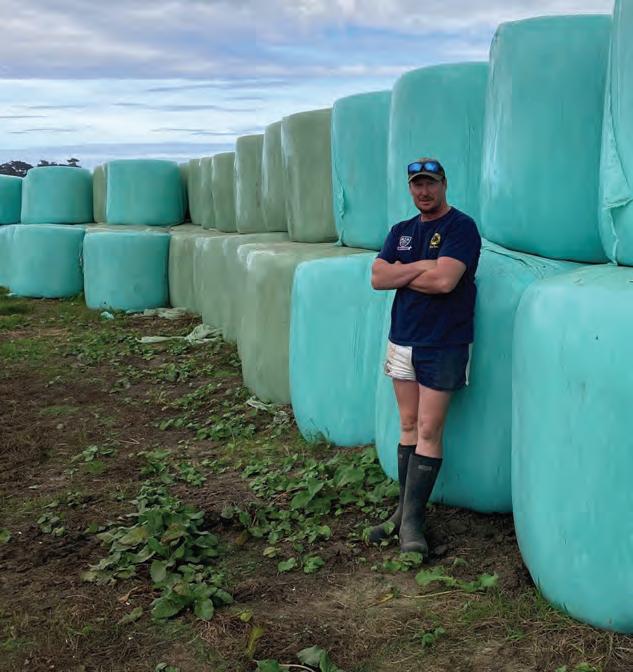
must grow into useful pasture.
He says the beetles that produce the grubs were flying around like crazy. He says if you left a window in the house open, the beetles would fly in. The trouble he sensed then turned to reality this year, compounding the drought problem.
“The earth was effectively scorched by the drought and grass grub,” he says.
With the rain that has fallen in recent weeks, Walker has been able to direct drill new coated grass seed and there is tinge of green emerging on his pastures, but still the grass

Rain is key to this as are soil and air temperatures. In the case of temperatures, it’s ‘so far, so good’ and even the few cold mornings have not changed the situation. Ironically what is needed is what dairy farmers don’t normally want – a wet winter.
“We probably need 300 to 400 mils over the next few months to get the water table back up but then you have got the problem that you also don’t want a wet winter.
“But if we don’t get rain we are going to be in the same situation as were last year. This drought is a massive wakeup call for people around the coast and if we don’t get the rain we need, then you will see farmers
growing crops such as turnips and maize to deal with the dry,” he says.
Walker says he’s spent close to $200,000 buying in supplement, not to mention the cost of restoring damaged pastures. His income is down because his milksolids are down, but the saving grace has been the $10 dairy payout. Without that, dairy farmers like Walker would be in very serious trouble.
Walker has heeded the advice of experts and called on his lifetime of experience to manage what many would describe as the unmanageable. The outcome with all that effort is quite sobering.
“By the looks of it, it will be just over a ‘break even’ season,” he says.

dairy and beef cattle, and Komal Mistry-Mehta who is chief innovation and brand officer at Fonterra.
A HIGHLY experienced agricultural scientist with specialist knowledge of the dairy sector is the Prime Minister’s new Chief Science Advisor.
Dr John Roche is currently Ministry for Primary Industries (MPI) Chief Science Advisor and he will also be the Prime Minister’s representative on a newly appointed Science and Technology Advisory Council. But as part of the deal, Roche will retain his Chief Science Advisor role at MPI.
The new council includes Sir Peter Gluckman, Craig Piggot the founder of Halter, a company that manufactures datagathering collars for
The other members are Malcolm Johns, CEO of Genesis Energy and Merryn Tawhai who has a doctorate in engineering science and who leads a research programme at the Auckland Bioengineering Institute.
“The Council will provide advice on long-term priorities for governmentfunded science and innovation.”
In announcing the appointments, Christopher Luxon says while NZ has world-
class scientists in our universities and research institutes, they’re working in a system held back by outdated settings. He says to unlock the full potential of science and technology, there’s a need for a sharper focus on commercialisation, better access to global investment, and clearer priorities at home.
He says the Advisory Council, which will be chaired by Science Minister Shane Reti, with John Roche as deputy, is a new initiative to get clear, independent advice to ensure our investments in science and technology are delivering real outcomes for New Zealanders.
“The Council will provide advice on longterm priorities for government-funded science and innovation.
They will help identify areas of focus that will have the greatest benefit for Kiwis and our economy.
“I also expect them to provide bold and courageous advice about those areas that aren’t delivering value for New Zealanders and may need to be deprioritised. It’s about making sure we are investing in what will have the greatest impact for New Zealanders,” Luxon says.
Luxon describes the new advisory council members as highly capable individuals who understand both the science and economic imperatives. He says they are prepared to make the bold calls needed to ensure the system is future-focused, outcomedriven and aligned with our economic goals.


DR JOHN ROCHE is one of NZ’s most respected agricultural scientists. He previously worked for Dexcel and later DairyNZ as a principal scientist before joining MPI in 2018. He is also an adjunct professor at Auckland Universities School of Biological Sciences, and he’s has also held science appointments in Ireland and Australia
Born in County Kerry in Ireland, Roche studied and obtained his doctorate in animal nutrition at the prestigious University College of Dublin, UCD, which has a strong agricultural department and its staff and NZ scientists have many joint projects. He also has a Masters in farm systems and pasture management.
In his role at MPI he led the task force to deal with M. bovis and more recently headed up MPI’s ‘On Farm Support’ (OFS) team. This and other successful ventures are due at least in part to his strong Irish connections.
The OFS initiative is designed to get MPI more involved at the grassroots level of farming, to better understand the needs of farmers and to bring them to the notice of his colleagues and government.
It is modeled on the work done by Teagasc, the Irish agricultural institute that operates in a similar way to what the old MAF did many years ago.
The OFS team has played a successful facilitation role in the rural community but sadly it’s likely that John Roche will have to give up the directorship of that team when he steps into his new role.
Roche is an affable individual who comes to the role with strong scientific credentials and real world, on-theground experience. He is a regular


contributor to science conferences both in NZ and internationally and has published more than 150 peer-reviewed science journal articles and book chapters. In all these roles he is regarded as a brilliant communicator of science to both his peers and farmers.
In his new roles he will have his work cut out as the government sets sail on a growth agenda with agriculture being a key driver. At the same time the merger of the ag-related CRI’s will come into effect and expect Roche and the Advisory Panel to keep a close eye on this.
When the announcement was made Roche was back home in Ireland but in a statement said, as someone who has dedicated their career to research and science, it was a huge honour to be appointed to the role.
He says he’s looking forward to working closely with members of the PM’s new Science and Technology Advisory Council and is confident the council’s independent advice will ensure taxpayer-funded science and innovation delivers real outcomes.
“I’m pleased that I will also be able to continue in my role as the chief science adviser at MPI and have thoroughly enjoyed the three years I have had leading the establishment and growth of MPI’s regional On Farm Support team.” Roche says he’s especially enjoyed spearheading the new Science for Farmers collaboration between MPI and key research partners. He says this has brought together leading scientists to regional field days to talk directly with farmers about research and innovation that’s helping to deliver gains on-farm.


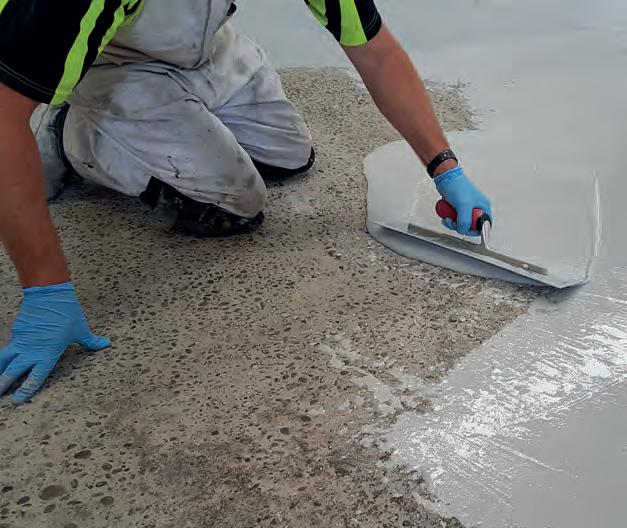

says the farming sector has been unable to effectively address quad bike safety.
Feds workplace safety spokesman David Birkett says the number of accidents and deaths related to quad bikes on farms is “just not acceptable”.
Birkett was commenting on a court ruling which convicted farm manager, Dane Hemphill and ordered him to pay reparations of $75,000 to a farmhand who lost his life in a quad bike accident.
WorkSafe New Zealand says the quad bike rollover which killed Ethan Payne, 31, at an Eketahuna dairy farm in November 2022 could have been avoided if Hemphill had kept the vehicle in good work-
“First and foremost, WorkSafe strongly recommends installing a crush protection device on the back of a quad bike.”
ing order. Worn brakes, uneven tyre pressures and poor suspension were among the defects found on the ATV that flipped at low speed and killed Payne.
The ATV had been purchased second-hand and had no crush protection device installed.
Birkett told Dairy News that sadly, the industry just doesn’t seem to be getting on top of this problem.
“It’s just not working,

with deaths in agriculture seeming to sit around the same numbers every year, it’s just not acceptable.”
Birkett welcomed the discussions that have been taking place between the industry bodies, including Federated Farmers, who have been looking for a solution, with hope it will lead to a Code of Practice for the use of ATV’s and side by sides.
“A Code of Practice was introduced for the forestry industry which

seems to be delivering safer outcomes,” says Birkett. “We must have a change of attitude, which in some cases is ‘it won’t happen to me’, while also addressing fatigue in many parts of the farming calendar.”
Hemphill was sentenced at Wellington District Court on 30 April 2025, with charges brought in relation to namely using a Honda TRX420FM2 quad bike at Spring Grove Dairies farm, that did fail to
comply with that duty and that failure exposed the workers to a risk of death or serious injury.
He was sentenced for health and safety failures uncovered by a WorkSafe investigation. Being a PCBU (a Person Conducting a Business or Undertaking), Hemphill had a duty to ensure, as far as is reasonably practicable, the health and safety of workers while they are at work in the business or undertaking.
The maximum penalty
for the offence is a fine not exceeding $300,000.
“This tragedy should be the lightning rod the agriculture sector needs to up its game on quad bike safety,” says WorkSafe’s central regional manager, Nigel Formosa.
“First and foremost, WorkSafe strongly recommends installing a crush protection device on the back of a quad bike.”
WorkSafe noted that pre-start checks are important, primarily to check tyre pressure and brake function before setting off. Regular servicing in line with the manufacturer’s recommendation is also necessary and should include oil changes and filter replacements.
A checklist can be handy to document the frequency of servicing, what was looked at, and any fixes undertaken. Any issues identified during pre-start checks or servic-
ing should be addressed to avoid further problems or potential hazards.
“We know life is busy for farmers, but there’s no excuse for letting your quad bike maintenance slide, especially when the consequences can be catastrophic. Ideally maintenance checks are done by a mechanic, but if owners are too busy to take quad bikes in for a service, they should arrange for a mobile mechanic to come out to you. The cost is nothing compared to having a preventable death on your conscience,” says Formosa.
Agriculture was New Zealand’s deadliest industry in 2024, with 14 workers killed. Vehicles were the leading cause of death and injury on New Zealand farms, which is why WorkSafe’s new strategy targets about a quarter of their future inspectorate activity towards agriculture.




































FONTERRA HAS invested in a new effluent pond mobile dosing ser-
vice to support farmers to reduce emissions and make progress towards its

on-farm emissions reductions target.
The two-year pilot will begin in August and involve up to 200 Fonterra farmers in Waikato and Southland to trial the scalability and effectiveness of the service.


Developed by Agnition, Ravensdown’s innovation and investment subsidiary, and Lincoln University, EcoPond uses polyferric sulphate and sulphuric acid to reduce and prevent methane emissions in effluent ponds. Studies have shown the treatment can reduce a farm’s effluent pond emissions by at least 90%.
While the previous EcoPond system required significant on-farm infrastructure for installation, the new dosing service uses a truck to dose the pond as-needed, reducing deployment costs.

Fonterra’s director of sustainability Charlotte Rutherford says novel technology, like EcoPond, is one of several levers the co-op is pulling to make progress towards its target of a 30% intensity reduction in on-farm emissions by 2030 (from a 2018 baseline).
“While there’s no silver bullet, we expect around a 7% reduction in our on-farm emissions to come from novel technologies. We’re starting small with this pilot in regions where the Eco-

Pond trucks can currently operate to test effectiveness and scalability.
“We continue to explore new tools, services and technology to support farmers, and we’re working alongside Agnition to understand what would need to be considered before we could scale EcoPond to benefit more co-op farmers.”
Agnition chief executive officer Jasper Van Halder says they’re focused on finding, developing and investing in high-potential opportu-
nities to solve real-world challenges in the agriculture sector.
“EcoPond is highly effective at reducing onfarm methane emissions – and it’s available for farmers now. By partnering with Fonterra, we can deliver this simple and practical solution at scale, benefiting the industry and the role our sector can play in delivering a sustainable future.”
Effluent ponds on average represent about 5% of a Fonterra farm’s total emissions, which include emissions associ-
ated with land use change and those released from peat soil, minus any carbon removals.
The treatment has shown promising results in a trial on the Net Zero Pilot Dairy farm, a project within the Co-op’s partnership with Nestlé. Use of a custom EcoPond system on the farm has reduced methane emissions from the treated effluent samples by around 97%.
Eligible farmers will be emailed a link to register their interest in the pilot in early May and the
200 pilot farmers will be confirmed before the end of June.
Funding for the pilot comes from the co-op as well as recently announced customer incentives, which include on-farm solutions made available through separate agreements with Mars and Nestle.
Further information about the full suite of onfarm solutions, designed to further improve emissions efficiency, will be shared in June.
@dairy_news facebook.com/dairynews

A NEW Indonesian school milk programme is expected to significantly increase the country’s total dairy consumption, creating opportunities for New Zealand and other global dairy players.
According to a Rabobank report, Indonesia’s new school milk programme could nourish minds and global dairy markets. The recentlyelected Indonesian government has introduced a range of policy measures with the potential to transform the country’s dairy supply chain.
“The centrepiece of its policy is the Nutritious Meals Programme, which aims to combat malnutrition and promote healthy
“And overall, we expect global input players and dairy companies to benefit.”
eating among school children,” report author RaboResearch senior analyst Michael Harvey says.
“A key feature of this programme is to provide food, including milk, to 60 million students on every school day by 2029.
RaboResearch estimates the total milk required at full implementation could surpass 2 billion litres.
“This estimate is

Michael Harvey, Rabobank
Quatro by Skellerup is a handcrafted technical gumboot designed for all-day comfort and warmth. Advanced multi-layer insulation keeps your feet warm in temperatures down to -50ºC, while the cushioned midsole offers ergonomic support and eases fatigue.
A secure ankle-locking fit prevents heel slip, and the mud-releasing outsole delivers exceptional grip, making Quatro ideal for the dairy shed.

based on an anticipated 83 million recipients accounting for school absenteeism, lactose intolerance, and an average serving size between 125ml and 200ml.”
The report says the ambitions behind Indonesia’s school milk programme have the potential to significantly increase Indonesian demand for liquid milk.
“The majority of milk consumed by Indonesia’s 280 million people in 2024 was imported, with domestic production estimated at 900 million litres, and an additional 2.5 billion litres (liquid milk equivalent) imported,” Harvey says.
“To meet the growth
in demand that will result from the programme, the government and industry plan to significantly increase the national dairy herd.”
As the rollout of the programme gathers pace, the report says, investment across Indonesia’s dairy sector is expected to accelerate, with more pronounced impacts on the global sector.
“For Indonesia to achieve its ambitious milk supply growth targets and accommodate the considerable number of dairy cattle needed, it will need to scale up both live cattle supply and the local dairy supply chain,” Harvey said.
“This will include
need for feed genetics, farm infrastructure and farm management skills to support the expanding local industry.
“And overall, we expect global input players and dairy companies to benefit.”
While the school milk programme is likely to increase domestic supply and provide a tailwind for local Indonesian dairy players, Harvey says, Indonesian dairy import demand is also expected to rise. “Fundamentally, RaboResearch expects Indonesia to remain a net importer of dairy and anticipates that annual import volumes are likely to grow over the medium term,” he says.
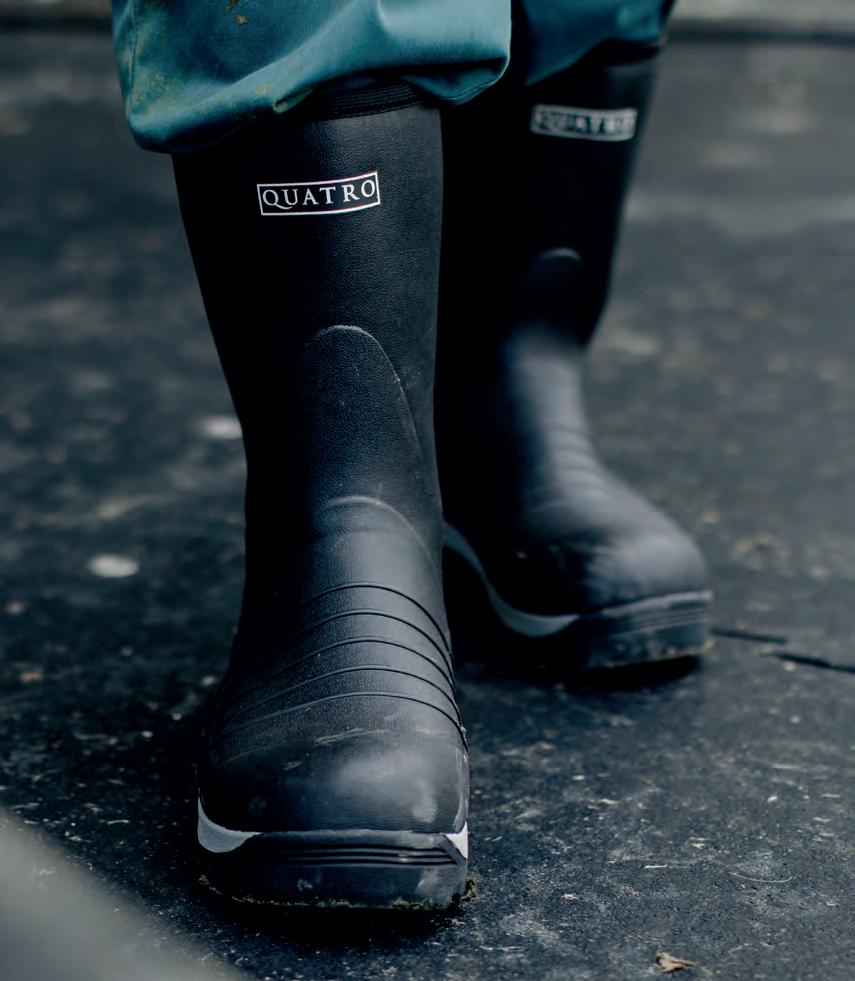
Discover the full Quatro by Skellerup range or visit:
WHEN THERE is new evidence, good leaders change course. But this Government is refusing to listen. The Parliamentary Commissioner for the Environment recently issued warnings about New Zealand’s overreliance on exotic forestry through the Emissions Trading Scheme (ETS).
Yet still, the Government presses on with its current approach. With the lack of a credible climate policy and ignoring the advice of officials, National is allowing the rate of farm-to-forest conversions to continue. It speaks of pure arrogance and will lead to worse outcomes.
The high rate of conversions is a problem for two main reasons:
It’s devastating for rural communities. As farms are sold off and converted to carbon forests, jobs vanish. It creates a domino effect where families leave, and local schools, shops, and essential services shut down, and it has a real toll on mental health and wellbeing.
The Emissions Trading Scheme (ETS) has become the Government’s only real climate lever, and it’s misfiring. The scheme rewards conversions of farmland into fast-growing pine forests because it can be more profitable than producing food.
The Commissioner for the Environment Simon Upton said New Zealand’s “tree planting scheme” is doing little to genuinely cut planet-heating gases, warning that the ETS is built on a “deeply flawed assumption” that carbon dioxide in the atmosphere can be offset by carbon storage in forests.
Emissions offsetting only works if the forests stay there forever to match the life of the carbon emissions, but this isn’t guaranteed. Phasing forestry out of the ETS, as he recommended,
would help address this issue. It would protect rural communities, stabilise the carbon market, increase pressure to invest in clean technologies, and refocus forestry to strengthen biodiversity, land stability and native reforestation.
However, instead of heeding expert advice, the Government has decided to trudge on with their weak rules. They’ve announced changes to the amount of farmland that can be converted to exotic forestry, due to come into effect in late 2025.
The new rules still allow up to 25% of a farm’s productive land to be converted and they keep the door open for landowners to have land use classifications reassessed. These superficial tweaks do little to protect our farms and address the rate of farm conversions to forestry, and even worse, they have triggered a land grab. We’re seeing a rush to convert farms before the October 2025 deadline hits. National says it wants to “strike a balance” but their messaging isn’t matching the action.
The Government likes to blame Labour for the rate of farm conversions to forestry, but the facts don’t back that up. While we didn’t get it completely right, Labour’s One Billion Trees programme didn’t encourage planting on productive land, and in 2023 we gave local communities a say over whether conversions could proceed. Now, hard data shows that in 2022 carbon prices hit record highs on the market which led to a surge in afforestation — most of it in fast-growing exotic species like pine — and this trend is continuing.
The current trend of afforestation is unsustainable, and this Government needs to make the right choice by taking official advice to phase out forestry offsets and invest in landowner support to integrate trees into farms without wiping
them out entirely. If they don’t change course now, we’ll be stuck with the consequences for generations.
‘Emissions trading’ is
a market-based approach for reducing emissions of greenhouse gases. The ETS puts a price on emissions, by charging certain sectors of the economy
for the greenhouse gases they emit.
• Jo Luxton is Labour spokesperson for agriculture, biosecurity and rural communities.


Leasing



A MID-CANTERBURY
dairy farmer is bringing a millennial mindset to his family farm and is reaping the rewards, with a 50% uplift in milksolids production since he took over.
John Totty, 34, milks jersey cows at Lawnhayes—the family’s 465ha dryland farm at the base of Mount Somers in Staveley.
Compared to the average Kiwi farmer, John is young. Statistics NZ data suggests the average age of New Zealand farmers is over 51.
Taking over the family farm wasn’t his initial plan. He first completed a Bachelor of Commerce, majoring in finance at Otago University, and then travelled overseas, including a stint guiding hunting trips in Canada.
It was only after his father Ian died in an accident in 2015 that John—then aged just 26—stepped up and took over the farm.
A sharemilker was in place at the time, giving John and the family a window of opportunity to seek advice and take a good look at the farm, and consider what was working, and what wasn’t.
“The younger generation of farmers are quite happy to try new things, whereas a lot of older farmers might be worried that their milk produc-
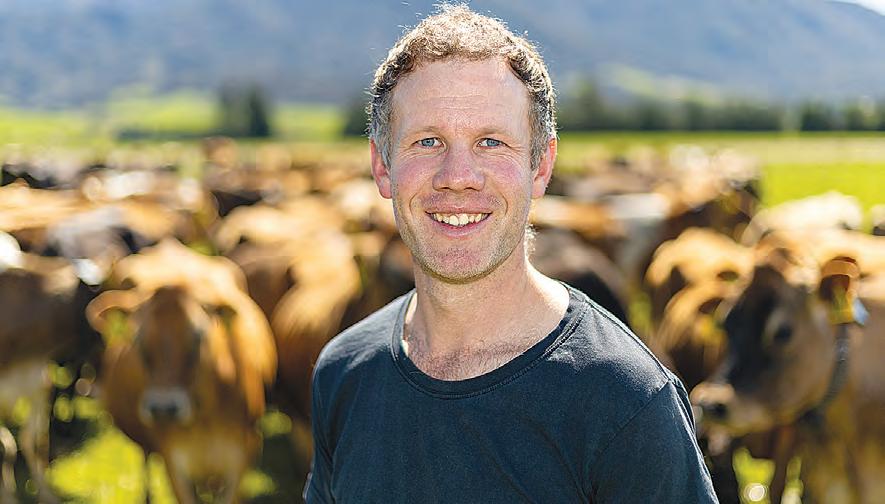
tion might drop,” he said.
Having grown up with technology, he said millennial farmers are generally able to do research more quickly and easily
than previous generations.
After taking over, Totty focused on improving grass quality and utilisation, as well as
JOHN TOTTY says that getting the right people around him during this period of succession and change was crucial, especially at the start.
“The team at ANZ put me onto a really good lawyer and a new farm advisor—they definitely added value, and they backed it up by offering the best rates,” he said.
“They were just really enthusiastic – they’ve both known the family a long time – one of our original ANZ contacts, Mark Grenside, actually coached me in rugby!”
ANZ regional manager Cameron Reed said the changes Totty has made to improve output come at a good time.
“In terms of the market, Canter-

1 . Always strike a fair deal: “A deal has to always benefit both parties, otherwise it’s not a good deal for either of you.”
2 . Get some off-farm education: “You’ll do lots of onfarm learning, but if you can get some insights into why it’s done that way, you’ll pick everything up quicker and you’ll have a greater appreciation for what you’re doing.”
3. Use the resources that are out there: “There is so much information out there that can be used, or even just asking people for advice – don’t be afraid to just pick up the phone.”
4 . Have a go: “If you’re looking for experience, ask a few local farmers if you can come and help on their farms during holidays or downtimes.”
installing Allflex automatic drafting gates.
He removed old accommodation from the property and replaced it with modern lodgings, to
bury dairy farmers are currently benefiting from strong production, high prices, and a weak New Zealand dollar,” Cameron said. “New Zealand’s milk production hit its highest level in five years during 2024, producing 1.92 billion kilograms of milksolids.”
The low New Zealand dollar, relative to the US Dollar, is also enhancing farmer payouts, with Fonterra currently forecasting $9.70-$10.30 per kgMS.
“The global trade environment presents our farmers with new challenges, but also opportunities.
Agriculture is driving New Zealand’s economic recovery,” Reed says.
“ANZ is keen to help the sector
• Ideal for Cattle Troughs
• High Flow
• Side/Bottom Mount
• Detach to Clean
make Lawnhayes a more attractive place for staff to live and work.
The milking shed was upgraded and modernised, as well as the
grow and thrive… as the next generation takes the reins.”
Acknowledging the importance of not working to the point of burnout is one of the most noticeable changes between his generation and his fathers’ Totty says.
He doesn’t feel guilty about taking a day off, whereas his father was “head down all the time, working, working, working”.
“My first calving, I did 73 days straight,” Totty says.
“I had three mini breakdowns in the afternoon and had to go to bed – I was not doing my best work.”
Learning to manage his workload effectively has been a crucial part of his development as a farmer.
backing gates, and Totty also undertook the process of re-configuring Lawnhayes’ paddocks and laneways.
“All our lanes and paddocks were designed for back when the farm had 200 cows,” he says.
“We’ve re-fenced the whole farm now, little bits every year, and it’s all brand new 7-metre-wide lanes.
“All the paddocks are about 3-4 times bigger –we had about 200 and we would be down to about 60 now.”
Perhaps one of the most significant changes was a shift to 10-in-7 milking (10 milkings over 7 days), which works well for his Jersey herd, and results in less milking needing to be done.
Over the past season, Totty has also introduced Halter collars to help
manage his herd.
He also made the call to stop rearing calves on the property, putting that land back to work producing milk. “We were trying to do all of the young stock on farm and milking fewer cows as a result, and we simply didn’t seem to be doing a good job,” he explained.
That focus on improving efficiency and productivity has paid off. Totty says he has been able to increase milk production by 50% within a few years.
“We were doing 260,000 kgMS odd and we did 393,000 last year,” he says.
“We’re getting closer to doing live weight too - our cows are about 425 kgMS and we want to do 425 kgMS/cow – and we did 410 kgMS/cow last year.”


• Compact/Robust


• Up to 50mm Inlet
• Flows up to 600L/min
• For Storage Tanks
• Easy Access to Valve
• Inlets Upto 50mm
• Avoids Starting & Stopping of Pump When Tank is Filling



TO CELEBRATE 25 years of the Hugh Williams Memorial Scholarship, Ravensdown caught up with past recipients to see where their careers have taken them, and what the future holds for the industry.
The scholarship, created in memory of the late Hugh Williams, a Ravensdown director from 1987 to 2000, was designed to support passionate agriculture students. A quarter-century on, its alumni are showing just how broad and dynamic the sector has become.
Some have become entrepreneurs, some are in science. Others own and run farms, and a few eventually took jobs at Ravensdown.
Recognising the diversity of careers available in farming now, Ravensdown asked scholarship
recipients what they feel the agricultural sector is missing, and where the next generation could make an impact.
Previous scholarship recipients say the sector needs more innovation, tailored advice, passion, marketing, and good governance.
Johanna Olsen, 2013 recipient, wants more grads to consider farming itself.
“We need more people who want to grow the food. Farming offers real opportunity for young people willing to apply themselves,” says Olsen.
Stephanie Laird, 2003 recipient and a current farmer, sees a risk in falling behind on innovation.
“In tough economic times, R&D often takes a hit, but it’s critical. Every smart product or tech can make a difference onfarm.”

Stephanie
also works as a project manager for Ravensdown’s topdressing division, Aerowork,

DAIRYNZ Farmers Forum is back with three events – in Waikato, Canterbury and Southland.
The event provides farmers the time, place and up-to-the-minute updates across the sector to support leading farmers to shape the future of dairy.
DairyNZ chief executive Campbell Parker said while it’s an industry-good job to ensure the sector has a positive future with the right solutions in place for farmers, they can’t do it alone.
“We are privileged to have a stellar group of experts and farmers who are doing amazing and innovative work on farm share all that knowledge and keep pushing those boundaries at Farmers Forum 2025.
“As we navigate changes in the global economy, trade, and technology, it’s critical that we come together to problem-solve, plan, and prioritise for success.”
The events offer attendees a unique
opportunity to talk with experts and other farmers about the future of dairy farming in an increasingly complex global and national landscape.
“The world is changing fast, and so is the way we farm. Our focus at the Forum is on providing farmers with actionable insights into the global and national trends that will shape their businesses in the years to come. By collaborating with other leaders in the sector, we can ensure that New Zea land’s dairy sector continues to thrive and lead on the world stage,” says Campbell.
There will be a wide range of trade stands at each event to further support collaboration across the sector. Farm ers are encouraged to register now to secure a spot. Registrations are open and free for levy-paying dairy farmers and their staff. For more information, the full programme and registration, visit dairynz.co.nz/farmers-forum.
says Laird.
preneur
Sarah How – a strong advocate for con
day job.
She was the 2012 recipient, and recently cofounded Landify, an online platform breaking down the barriers to farm ownership.
Steven Foote, 2007 recipient and farm owner, is looking to implement new technology on his farm to increase productivity and decrease environmental impact. He says the sector needs more people who are deeply committed to their chosen fields— whether that’s genetics, soil science, or environmental management.
It is important we
world-class food, but we’ve got to get better at showing the world.”
Ravensdown chief executive Garry Diack says it shows the many paths agriculture students can now choose to take, from technology development to communications specialists.
“Farming has always been complex, but it is becoming increasingly more so – farmers now need to be employers, compliance managers, guardians of the land, part-time soil scientists, environmental experts, digital savants and dabble in meteorology.

“That’s why Ravensdown is on hand to help farmers make good decisions for their land and why it supports young agriculture students to learn the science behind farming, so New Zealand can farm smarter.”


























GOOD MILK flows, healthy cows and fewer spring headaches are all possible if cow body condition score (BCS) is well managed between drying off and next season’s calving.
But SealesWinslow dairy nutrition specialist Simon Butler cautions BCS gains are not easily won over the dry period and need good planning, feeding and commitment to be achieved.
“You are aiming at a calving BCS score of 5 for cows and 5.5 for first and second calvers. Realistically you must allow 60-70 days to gain 0.5 of a BCS.”
He says the time available may appear sufficient in early May, but it rapidly shrinks when key events are considered.
“You must assume no BCS gain over drying off, which occurs over about 10 days. Then you have the four weeks before calving when the cows’ bodies can’t gain any more condition because their rumen capacity is impaired and they’re using more energy for the growing calf.”
Taking these points into account, the time available to reach BCS targets is significantly reduced, and the number of days dry also affects other aspects of the herd’s health.
“You also have to allow for the mammary gland to recover which takes about six weeks, and dry cow therapy withholding periods, and these can be up to 53 days.”
All of these caveats mean every single day between now and calving, you need to optimise their nutrition. And the reasons for getting condition up to where it needs to be are compelling.
“For heifers a 5.5 BCS is vital because they require more energy post calving to perform while
continuing to grow.
“Meanwhile, mature cows calving lighter than they should will result in them taking longer to start cycling and they’ll produce less milk during lactation. The risk of various metabolic diseases also increases the further the cow is from the 5.5 BCS target.”
Simon urges herd owners and managers to take stock of current herd BCS while there is still time to do something about it.
“If you are still milking and have one eye on drying off, it pays to work backwards from a set drying off date and then make some late lactation dietary changes.
“At the start of that two-week drying-off window, you can start changing your cows’ diets by reducing their protein content, while still maintaining dry matter and energy supply. Reducing protein content in their diets results in reduced milk volumes, helping reduce the risk of mastitis in the last few days of milking.
“Using fibrous feeds like lower quality baleage, or even hay, provides the energy required to maintain bodily functions and weight gain while limiting protein supply. Cows can be returned to previously grazed paddocks but high levels of bulky, high fibre feed should still be available.
“If not already employed, once-aday milking at the same time will aid in reducing daily milk flow, freeing up energy for the cow to store for later.”
Simon contrasts this with the conventional approach of “crashing” herd production over a few short days, replacing the milking diet minimal low-quality supplement and sometimes even restricting water intake.
While accomplishing the main aim of ceasing milk flow, it brings productive and animal welfare consequences.
“You risk the loss of BCS, making the dry period even more challenging in trying to get it back on. Mastitis risk also increases, because regardless of feed intake, that cow will still want to make milk for a short period of time, putting stress on the mammary tissue.”
In contrast the controlled process will achieve the two main goals: ceasing milk production while reducing mastitis risk and minimising BCS loss.
“A smarter more effective strategy is through diet composition, not restriction.”
These late lactation dietary changes also play well into the herd’s dry period.
If condition can be at least maintained over the drying off period, it is condition that does not have to be put on post-drying off.
WARREN TANNER, SealesWinslow’s north-west Waikato technical sales rep, says feeding a good carbohydrate rich supplement like maize silage while the herd is still milking can provide bankable BCS to carry into winter that is easier to retain, than try and gain once the herd is dry.
“But you also want to avoid the risk of simply pushing milking too far, encroaching on pasture cover and the time you have to hit calving BCS targets.”
The decisions made now heavily affect next season, setting the

Key points for successfully ending season
baseline for cow condition and pasture covers in spring.
“Allowing for the pre-calving period and dry-off, you really need 90 days to build 1BCS, and that’s assuming cows can overcome the usual metabolic and energy challenges over winter,” says Tanner.
“Supplement should be used strategically to support cow condition and covers going into winter. Try and minimise what body condition they do lose whilst drying off and have a robust winter nutrition plan ready.”
1 . Be realistic – allow adequate time to put condition on over the dry period- work on 0.5 Body Condition Score needing 60-70 days, 1 BCS 90 days.
2 . Aim for 5.5 BCS for heifers – they are still growing and need the 5.5 score to continue to do so, and to milk well.
3. Bulk up feed early – allow 2 weeks prior to drying off to shift diet to a bulky, high fibre, lower protein regime.
4 . Condition kept is time saved –good management at drying off will reduce BCS loss and having to try and get it back on over the dry period.






GOOD PLANNING and communication are crucial to ensure a successful moving day.
Early preparation is important, as is clear communication with the farm team regarding plans and expectations.
Careful consideration must be given to animal movements, and all farm equipment and machinery should leave the farm in a clean and disinfected state to manage health and biosecurity risks.
Set up for success
Ensure sharemilker / contract milker contracts are signed by both parties and a farm inspection with new farm owner, incoming and outgoing sharemilkers, farm manager, farm advisor has been planned.
Determine staffing needs for the new farm, start recruiting for required staff and ensure signed employment agreements are in place, alongside signed service tenancy agreements for any employees who will live on farm.
Ensure anyone coming onto the farm hasn’t been overseas in the past seven days to reduce the risk of introducing exotic organisms, especially if they have been travelling to countries with foot and mouth disease (FMD) and have been in contact with FMD-susceptible animals (e.g. farmed or wild cattle, sheep, goats, pigs, deer, llamas, alpacas).
Communicate regularly with the people on existing farm and the people who will be on the new farm about plans including key dates, and information. Ensure staff have enough time to be prepared, pack and clean in the weeks leading up to moving. If necessary, adjust rosters and hours of work.
Get in touch with farm insurer well before the move - there might be more things to discuss. It’s a good idea to know the physical address, building details, any plant or machinery details, and the details of sharemilking or contract milking
agreement if applicable.
Contact utility providers (e.g. power, internet, etc) and ensure disconnection and reconnection on the right dates. Take and record final power meter readings for all houses at both properties.
Farm owner responsibilities
Ensure employees leave houses clean and tidy. Complete a house/s inspection for any maintenance required on current farm by end of April and arrange for any repairs and upgrades required. Check house complies with healthy home standards.
Complete a final house inspection with existing tenant (sharemilker and/ or employees) as soon as house/s are vacant.
Consider whether drug testing of house/s will be required.
Confirm with departing and new tenants their departure and arrival times so there is no cross over between parties.
Check with insurer on obligations in terms of inspections and what, if any, impact this could have on insurance cover.
Sharemilker / Contract milker responsibilities
Ensure own house and employees’ house/s have been left in a clean and tidy state to the standards agreed in the contract.
Consider whether drug testing of house/s will be required.
If yes, arrange contractors and discuss with farm owner.
Complete house/s inspection with employees and then farm owner as soon as house/s are vacant, and complete house/s inspection prior to moving in on new farm.
Immediately discuss any issues with farm owner, agree a plan and document this.
Contract obligations
Ensure all body condition score (BCS), pasture cover targets or supplements on hand will be met as per the contract on takeover date. If they are not going to be met, have a proactive con-
versation with the other party as to what arrangement can be made to compensate.
Obtain third-party advice if required to reach
an agreement.
Contract third-party to measure surplus/deficit feed inventory and quantify if required.
• Article- DairyNZ


• update your details
• tag and register your animals
• record your movements.
WITH A focus on producing their own on-farm dairy feed requirements, it would be safe to say that the Fleming family are no strangers to a fertiliser spreader on their North Canterbury farm, near Culverden.
Together with his father Mark, Sandy Fleming milks about 1,050 mainly Friesian cows on a 400 hectare property, while raising 300 yearling replacements, 300 rising two-year-old replacements and young bulls on a 230ha support block. Some of the 130 bulls reared, including Speckle Park’s, are used over the cows, while Jerseys are the preferred choice to cover first-calvers.
AR1 ryegrass is grown for the cows, with pea and barley cereal crops
are grown for silage production. Some straw is bought in, with some hay and grass bales occasionally produced on the support block.
The regime sees fertiliser applied monthly on grass from September through to April, with cereal crops receiving a single application postestablishment.
Applications include nitrogen, super phosphate and ammonium sulphate products, with the former capped to a maximum 190 units each season.
Much of Sandy’s day was previously spent on a tandem-axle fertiliser spreader, but a decision to upgrade around two years ago saw the arrival of an AgriSpread singleaxle spreader, and with it,
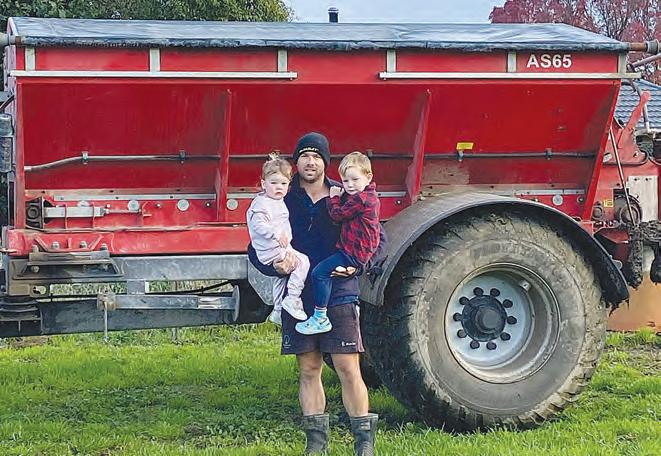
multiple benefits.
Built in County Mayo, Ireland, where the AgriSpread business was established in 2006, the AS 65 was supplied by Power Farming Canterbury at Rolleston. The machine, weighing in at around 2.8
tonnes unladen, holds 4 tonnes of nitrogen and up to 9 tonnes of line, usually pulled by a 280hp tractor.
In practical terms, the upgrade has allowed the Flemings to increase their spreading width to
24 metres, compared to the 15m width of their previous spreader, helping to significantly reduce spreading time, with the ability to go as wide as 36m, depending on weather conditions.
“All my time was
spent spreading fertiliser, now I have the time to tackle other farm jobs,” Sandy said.
Utilising a hydraulic drive system, compared to the friction drive of the old machine, the AS 65 also features hydraulic control of the spinners and drop point adjustment, while load cells ensure accuracy of spreading across the full working width.
The hydraulic-driven spreaders are also compatible with most ISOBUS GPS systems for monitoring and control of spread rates from inside the cab, and they come ready for variable rate applications and with the option of section control.
“We’ve always been fans of load cells. The
accuracy is brilliant, and the spread pattern is very good,” Sandy said. “Every time I spread something different, I do 5ha, write the weight down, then I run the numbers, and once I know, I just keep going.”
Sandy says that the spreader is a quality-built machine that still “looked like new” and included standard equipment such as hydraulic brakes, transport lights, load drive monitoring and a 120mm x 120mm section axle.
Opting for oversized tyre equipment and working in conjunction with the standard damped drawbar coupling, the set up was ideal for traversing over irrigator pivot ruts compared with the previous tandem axle spreader.
TRACTOR MANUFACTURER and distributor Case IH has announced a new partnership with Meet the Need, the grassroots, farmer-led charity working to tackle food insecurity across New Zealand one meal at a time.
As part of the new initiative, $50 from the sale of every new Case IH tractor in New Zealand will be donated to Meet the Need, helping provide meals to families in need through local food banks and community groups.
Founded and led by farmers, for communities, Meet the Need offers a practical way for the primary sector to give back, by donating livestock, milk, or funds to deliver nutritious, protein-
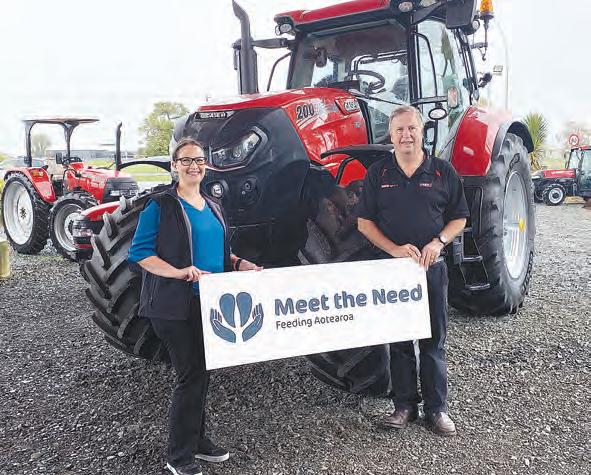


rich meals where they are needed most. Since launching in 2020, Meet the Need has already provided over 2.3 million meals to more than 130 food banks and community groups nationwide. Meet the Need general manager Zellara Holden says the partnership highlights a shared commitment to community support and helping those in need.
“Case IH is a brand we are proud to be associated with,” Zellara said.
“This sponsorship directly supports our mission of getting quality food onto Kiwi tables. When businesses like Case IH stand behind us, it helps create real, lasting change. Together, we can help build a better tomorrow for families across Aotearoa.”
Case IH business director – agriculture ANZ, Aaron Bett, said the partnership was a natural extension of the brand’s longstanding commitment to rural New Zealand.
“As a brand deeply rooted in New Zealand’s rural communities, we believe in showing up for the people who support us,” Aaron said. “Farmers are already doing so much to support their communities, and this is one more way we can stand alongside them, by supporting a practical, farmer-led solution that’s making a real difference.”
With the partnership now underway, every new Case IH tractor sold in New Zealand will help nourish a Kiwi family.



